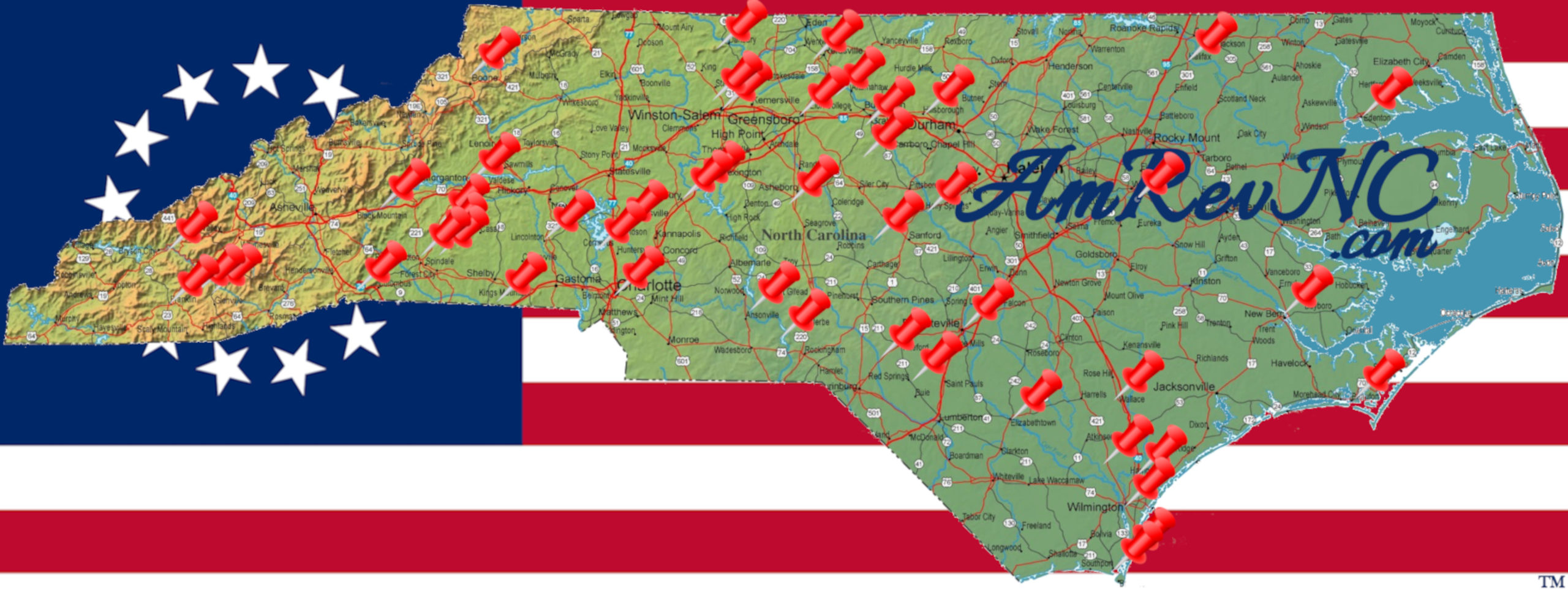Escapee from Two Disasters
Biography

John Pyle was born in 1723 to a doctor in Pennsylvania and trained as a doctor in London. He moved to N.C. with his wife Sarah and their eight children in 1767, to farm and practice in what became northwest Chatham County.1 One historian says Pyle was a member of the anti-corruption protesters called the “Regulators,” but is not known to have fought at the 1771 battle that ended the movement.2 The royal governor named Pyle a colonel in the provincial militia four years later. The next year, Pyle led a Loyalist unit in the march that ended in disaster for the “Tories” at the Battle of Moore’s Creek Bridge. He was captured, held briefly in Halifax, and then sent north. But Pyle and his son escaped in Virginia and returned home.3 Pyle took an oath of allegiance to North Carolina before the General Assembly in late 1776 to regain a normal life.4 Many Moore’s Creek Tories did the same, but the 1781 arrival of the British army in the state brought them back to active support of the king. Pyle guided 300 Loyalists from his area toward Hillsborough, answering a call to join Lt. Gen. Lord Charles Cornwallis. But they were tricked into a bloodbath at Pyle’s Defeat (or “Massacre”). Pyle managed to escape again, perhaps by hiding in a pond.5 But a family history says he lost an eye and some or all of the fingers of his left hand.6 Pyle and John Jr. surrendered themselves just after the Battle of Lindley’s Mill, three miles from his home, in hopes of obtaining a pardon offered Loyalists by the state. A captain “ordered him to take charge of the wounded, which he did, and proved very faithful.” Pyle was tried for treason but acquitted, perhaps helped by the letter that quote is from, which mentioned a second time Pyle cared for Patriots.7 After the war, most of the family moved to South Carolina, but John and Sarah stayed behind. He died at 81 sometime after Sarah, and was buried on their farm.8
Sources
- Jordan, Howard, ‘The Pyle Family’, 1977, Local History Collection, Chatham County Public Library
- Lossing, Benson John, The Pictorial Field-Book of the Revolution: Or, Illustrations by Pen and Pencil of the History, Biography, Scenery, Relics and Traditions, of the War for Independence (New York : Harper & Bros., 1851) <http://archive.org/details/pictorialfieldbo02lossuoft> [accessed 25 November 2020]
- North Carolina Council of Safety, ‘Minutes of the North Carolina Council of Safety, June 05, 1776 – July 16, 1776, Volume 10, Pages 618d-647’, Documenting the American South: Colonial and State Records of North Carolina, 1776 <https://docsouth.unc.edu/csr/index.php/document/csr10-0272> [accessed 5 October 2021]
- O’Neal, William, ‘Letter from William O’Neal to Thomas Burke, March 19, 1782, Volume 16, Page 244’, Documenting the American South: Colonial and State Records of North Carolina <https://docsouth.unc.edu/csr/index.php/document/csr16-0067> [accessed 21 January 2022]
- ‘Tories Faced Several Choices in Last Days’, The Sanford Herald (Sanford, N.C., May 1976), Bicentennial Edition
- Troxler, George, ‘Pyle, John’, NCpedia, 1994 <https://www.ncpedia.org/biography/pyle-john> [accessed 11 December 2021]
- Troxler, George, Pyle’s Massacre, February 23, 1781 (Burlington, N.C.: Alamance County Historical Association, 1973)
1 Jordan 1977.
2 Troxler 1973.
3 North Carolina Council of Safety.
4 Troxler.
5 Lossing 1851.
6 Jordan.
7 “Tories Faced…”; “Letter from William O’Neal…”
8 Jordan.



